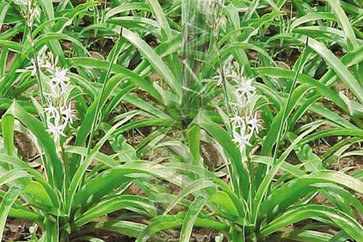Atimatra Ashana: Ayurvedic Insights into Overeating Disorder
Overeating is a deeply ingrained habit that can slowly lead a person toward a multitude of health problems. Many people consume food without understanding the importance of portion control, and even more are unaware of where to draw the line. Knowing when to stop eating is a major issue. Often, people eat mindlessly, enjoying the flavors while ignoring the strain they put on their digestive system. The stomach, overburdened and overstressed, struggles to process excessive food, especially when consumed at irregular times. Over time, this constant pressure wears down the digestive organs.
Often, people eat mindlessly, enjoying the flavors while ignoring the strain they put on their digestive system. The stomach, overburdened and overstressed, struggles to process excessive food, especially when consumed at irregular times. Over time, this constant pressure wears down the digestive organs.
Eventually, they begin to malfunction, leading to chronic indigestion—a condition that may not show immediate danger but acts as a silent killer. Left unchecked, habitual overeating lays the foundation for numerous serious diseases. Sadly, many remain unaware of these risks or choose to ignore them, continuing the cycle until it’s too late to reverse the damage.
Overeating: What Does Ayurveda Say?
- Ayurveda sees food as both nourishment and medicine. How we eat is just as important as what we eat.
- Overeating, or Atimatra Ashana, is viewed as a key disruptor of health.
- The act of overeating goes against the core Ayurvedic principle of balance—especially of the digestive fire (Agni).
What is Atimatra Ashana?
- Atimatra = excessive, Ashana = eating; combined, it refers to eating beyond one’s capacity or hunger.
- Ayurveda classifies it as a form of Mithya Ahara (improper eating) that leads to disease.
- Overeating is not just about quantity, but also about frequency, speed, and emotional triggers.
The Ayurvedic Rule of Thirds: Eating in Moderation
- The stomach should be filled 1/3 with solids, 1/3 with liquids, and 1/3 left empty.
- This promotes optimal digestion by giving the stomach room to churn and process food efficiently.
- Leaving space supports the flow of Vata, Pitta, and Kapha—the three doshas.
- Overeating compresses these energies, leading to poor digestion and imbalance.
How Overeating Affects the Digestive Fire (Agni)
- Agni, the digestive fire, is central to health. Overeating weakens it.
- A weakened Agni leads to Ama—toxic, undigested residue that clogs bodily channels.
- Impaired digestion can cause symptoms like bloating, fatigue, and mental fog.
- Over time, this can result in chronic diseases such as diabetes, obesity, and indigestion.
Dosha Imbalances Caused by Overeating
- Kapha Aggravation: Leads to heaviness, weight gain, lethargy, and depression.
- Pitta Imbalance: Can cause acidity, inflammation, and irritability.
- Vata Disturbance: Results in irregular digestion, gas, and restlessness.
- Chronic overeating throws all three doshas off-balance, though Kapha is most commonly affected.
Emotional and Mental Consequences
- Ayurveda sees the mind and body as deeply interconnected—overeating clouds both.
- Excessive food dulls Sattva (clarity), increases Tamas (inertia), and promotes emotional instability.
- Emotional eating is often linked to Manovaha Srotas (mind-related channels) disturbances.
- Cravings often stem from emotional imbalances, not true hunger.
Atimatra Bhojana: The Habit of Overeating
Atimatra Bhojana refers to consuming food in excess of one’s digestive capacity. The analogy used in Ayurveda compares it to placing a large amount of fuel on a small flame. Instead of strengthening the fire, the excessive quantity smothers it, weakening the digestive function.
This becomes particularly harmful when done habitually. It leads to Manda Agni, and eventually contributes to the development of metabolic disorders, such as obesity, diabetes, indigestion, and more.
1. Adhyashana: Eating Before Digestion Completes
A specific form of overeating mentioned in Ayurveda is Adhyashana, where a person eats again before the previously consumed food has been digested. This disrupts the natural digestive rhythm, burdens the system, and contributes to dosha prakopa—the aggravation of the three doshas (Vata, Pitta, and Kapha), leading to disease.
2. Ati Santarpana: Over-Nutrition and Its Effects
Acharya Charaka introduces the concept of Santarpanottha Vyadhis—diseases caused by over-nutrition. These are conditions that arise not from lack but from excessive and rich intake of food. It highlights that quantity is not the only factor—the heaviness, richness, and unbalanced nature of food also play a crucial role in derailing health.
3. Pashuvad Bhojana: Animalistic Eating Habits
Ayurveda warns against Pashuvad Bhojana—eating with an animal instinct. This refers to eating without self-control, awareness, or consideration for quantity and quality. Such behavior leads to Ajirna (indigestion), and becomes a gateway to systemic and metabolic diseases.
Eating mindlessly, without understanding the needs of one’s body or paying attention to hunger cues, reflects a disconnection from the self—a pattern that modern life often encourages.
4. Manasika Karana: Mental Factors Behind Indigestion
Ayurveda recognizes the deep connection between the mind and digestion. Emotional and psychological states like:
- Chinta (stress)
- Shoka (grief)
- Bhaya (fear)
- Krodha (anger)
- Irshya (jealousy)
- Lobha (greed)
- Ruk (pain)
…are all considered causative factors for Ajirna (indigestion), even if food is eaten in the right quantity and quality.
Modern medicine concurs with this view, identifying stress-induced hormonal imbalances (like elevated cortisol) as triggers for emotional eating and poor digestion. Multitasking, fast eating, and screen time while eating all reduce food awareness and disturb the body’s ability to digest.
Ahara Vidhi Vishesha Ayatana: Guidelines for Conscious Eating
To counter these issues, Ayurveda offers a comprehensive guideline under Ahara Vidhi Vishesha Ayatana—eight factors governing food intake. These include:
- Timing – Eat only when genuinely hungry.
- Quantity – Consume food appropriate to one’s digestive capacity.
- Place – Choose a calm and pleasant place to eat.
- Quality – Prefer freshly prepared, wholesome food.
- Pacing – Don’t eat too fast or too slowly.
- Awareness – Eat with concentration, not while talking, laughing, or watching screens.
- Mental state – Eat with a peaceful, calm mind.
- Hygiene – Ensure cleanliness of food, hands, and surroundings.
These guidelines aim not just at better digestion but at fostering a sattvic (balanced and pure) relationship with food.
Effects of Atimatra Ahara: Insights from Vagbhata
In Ayurveda, food is revered as the very foundation of health, but when consumed in excess, it becomes a source of disease. Atimatra Ahara—the habit of eating beyond one’s digestive capacity—is strongly condemned in the classical Ayurvedic texts.
According to Acharya Vagbhata, excessive intake of food disrupts the equilibrium of the doshas and paves the way for serious health disorders. This article explores Vagbhata’s observations on how overconsumption affects the body, especially the digestive system and internal balance.
1. Tridosha Vitiation from Excess Food
Acharya Vagbhata clearly states that excessive eating vitiates all three doshas—Vata, Pitta, and Kapha. When food is taken in quantities greater than what the digestive fire (Agni) can process, it does not get digested properly. The presence of undigested food in the digestive tract acts like an obstruction. This leads to physical pressure and biochemical imbalance, which in turn disturbs the doshas.
- Vata becomes erratic due to obstruction and dryness.
- Pitta gets aggravated by the stagnation and fermentation of food.
- Kapha increases due to the heaviness and accumulation of undigested substances.
This disturbance of doshas sets the stage for the onset of diseases.
2. Formation of Ama: The Toxic Byproduct
When digestion is incomplete due to a weak or overwhelmed digestive fire, the body fails to fully break down food. This results in the formation of Ama—a toxic, sticky, and heavy substance.
- Ama is considered an intermediate, improperly digested product that the body cannot assimilate or eliminate efficiently.
- Over time, this toxicity accumulates in the gastrointestinal tract and gradually spreads into bodily tissues (dhatus), becoming the root cause of many systemic diseases.
Thus, Ama is not just waste—it is a toxic burden that disrupts normal physiology and weakens immunity.
3. Sama Dosha: The Dangerous Combination
Once formed, Ama does not remain isolated. It binds with the already vitiated doshas, forming what is called Sama Dosha—doshas contaminated with Ama. This fusion is particularly harmful:
- Sama doshas are more aggressive and stubborn.
- They travel through the body’s channels, get lodged in tissues (srotas), and create deep-seated disorders that are harder to treat.
- This process initiates a vicious cycle where indigestion leads to Ama, Ama further vitiates doshas, and the doshas aggravate disease further.
4. Alasaka: Blockage and Suppression
One of the key disorders caused by this toxic interplay is Alasaka. In this condition:
- The channels of the body (srotas) get blocked by undigested food and Ama.
- The doshas are unable to move properly, leading to stagnation and severe discomfort.
- Symptoms include heaviness, bloating, abdominal pain, and a lack of appetite or enthusiasm.
Alasaka is essentially a state of digestive and energetic standstill, where the system becomes overloaded and paralyzed by toxic accumulation.
5. Visuchika: Violent Expulsion of Food
Another serious outcome of Atimatra Ahara is Visuchika—a condition characterized by the forceful expulsion of undigested food through both the mouth and anus, simultaneously and repeatedly.
- This mirrors acute gastrointestinal crises such as vomiting and diarrhea, often triggered by contaminated or excessive food.
- It is a body’s urgent response to eliminate harmful substances, but also reflects severe internal disruption.
6. The Need for Self-Discipline and Food Awareness
Vagbhata emphasizes that these disorders—Alasaka and Visuchika—primarily arise in individuals who lack discipline in food practices and are not self-controlled.
- Irregular eating habits,
- Mindless overeating,
- Ignoring hunger cues,
- And eating under emotional disturbance
…are all behaviors that aggravate this condition.
Ayurveda teaches that conscious eating, respecting digestive capacity, and maintaining balance in food quantity and quality are essential for sustaining health.
Santarpanottha Rogas: Diseases Caused by Over-Nutrition
In Ayurveda, the concept of balance is foundational to health. When there is an excessive intake of food, particularly heavy, rich, and unctuous food, it leads to Santarpana—over-nourishment or over-saturation.
This in turn gives rise to a group of disorders known as Santarpanottha Rogas—diseases caused by over-nutrition. Acharya Charaka discusses these conditions in detail, offering a profound understanding of how overeating affects various systems of the body.
These diseases often stem from the formation of Ama, and the aggravation of Kapha and Meda (fat), leading to blockages in bodily channels (srotas) and widespread metabolic imbalance.
Pathogenesis: How Overeating Leads to Disease
When a person consistently consumes food beyond their digestive capacity:
- The Agni (digestive fire) weakens.
- Ama (undigested toxic residue) is formed.
- Kapha dosha becomes aggravated.
- Meda dhatu (fat tissue) increases disproportionately.
- These elements together clog the channels (srotas) of the body and sense organs.
This chain reaction becomes the root cause of numerous Santarpanottha diseases, affecting everything from digestion to cognition, immunity, and reproductive health.
List of Santarpanottha Rogas (Diseases Due to Over-Nutrition)
Below are key disorders arising from over-saturation through food, as described in Ayurvedic texts:
1. Prameha – Diabetes and urinary disorders
- A metabolic condition primarily due to excessive Kapha and Meda accumulation.
2. Prameha Pidaka – Diabetic carbuncles
- Recurrent boils and skin infections seen in poorly managed diabetes.
3. Kotha – Urticaria
- Hypersensitivity or allergic skin reactions often linked to poor digestion and excess toxins.
4. Kandu – Itching
- Persistent skin irritation resulting from aggravated Kapha and Ama.
- A condition involving pallor and weakness, often connected to digestive insufficiency.
6. Amaja Rogas – Diseases caused by Ama
- Toxic residue due to undigested food is a central cause in many inflammatory and metabolic disorders.
7. Jwara – Fever
- Especially Ama Jwara, where fever results from systemic toxicity.
8. Kushta – Skin disorders
- Chronic skin conditions, such as psoriasis or eczema, are often traced back to Kapha-Ama imbalances.
9. Ama Pradoshaja Rogas – Secondary diseases due to Ama
- These manifest in various tissues and organs depending on the dosha and dhatu involved.
10. Mutrakrichra – Dysuria
- Painful or difficult urination, commonly linked to excess Kapha and toxins in the urinary system.
11. Arochaka – Anorexia or tastelessness
- A disturbed sense of taste or lack of appetite due to Ama obstructing taste perception.
12. Tandra – Drowsiness or stupor
- Kapha-induced heaviness leads to constant fatigue and mental dullness.
13. Klaibya – Erectile dysfunction and sexual debility
- Due to over-accumulation of Meda and loss of vitality (Ojas).
14. Sthoulya – Obesity
- A direct result of excessive calorie intake and Meda dhatu accumulation.
15. Alasya – Laziness and lack of motivation
- Kapha excess impairs mental alertness and physical activity.
16. Gaurava – Heaviness of the body
- A feeling of sluggishness and lack of lightness in the limbs and mind.
17. Indriya Srotasam Lepa – Blockage of sensory and bodily channels
- Ama and Kapha clog the fine channels of perception and circulation.
18. Buddheh Moha – Delusion or clouded intellect
- Mental fog, lack of clarity, and emotional imbalance due to systemic toxicity.
19. Shopha – Various types of oedema
- Swelling caused by fluid retention and impaired circulation due to Kapha dominance.
20. Anyaih Cha – And many more…
- This list is not exhaustive; numerous other diseases arise from similar pathophysiological mechanisms rooted in over-nutrition.
The Role of Kapha, Ama, and Meda
Overeating leads to:
- Kapha accumulation – heaviness, sluggishness, mucus formation
- Ama formation – systemic toxicity, blocked channels
- Meda dhatu increase – obesity, metabolic imbalance
Individually or collectively, these elements create obstruction in the srotas (the circulatory and communication channels in the body), which disrupts the flow of energy, nutrients, and waste, leading to disease proliferation.
Preventing Santarpanottha Rogas
To prevent or manage these conditions, Ayurveda recommends:
- Moderation in food intake – eat according to hunger and digestive capacity.
- Light, digestible diet – especially when digestion feels weak.
- Regular fasting or langhana therapy – to restore Agni and eliminate Ama.
- Exercise and physical activity – to mobilize stagnated Kapha and Meda.
- Avoidance of heavy, oily, and excessively sweet foods – which aggravate Kapha.
- Mindful eating – being aware of taste, quantity, and satiety.
Ayurvedic Principles for Managing Diseases Caused by Overeating
Ayurveda views overeating and over-nutrition (Santarpana) as root causes of many chronic, metabolic, and systemic disorders. When food is consumed in excess of digestive capacity (Agni), it results in the formation of Ama (toxins), aggravation of Kapha and Meda (fat), and blockage of bodily channels (srotas). This condition demands a multi-dimensional treatment approach grounded in classical Ayurvedic principles.
1. Nidana Parivarjana – Avoidance of the Cause
The first and most essential step in managing any disease in Ayurveda is Nidana Parivarjana, or eliminating the root cause.
In the case of Santarpanottha Rogas (diseases from over-nutrition), overeating is the primary cause, often combined with poor food habits and lack of awareness. Therefore:
- The person should be educated about proper diet, portion size, and eating behavior.
- Gradually, the individual should be guided towards conscious and mindful eating, with the support of a qualified physician or dietician.
Emphasis is placed on Ahara Vidhi—the Ayurvedic dietary code, which includes:
- Eating at the right time
- Eating only when hungry
- Avoiding distractions during meals
- Choosing light, wholesome foods suited to one’s prakriti
2. Therapeutic Principles for Santarpanottha Rogas
Once the cause is removed, the body must be cleansed, balanced, and strengthened using the following classical treatments:
1. Vamana – Therapeutic Emesis
- Vamana is the controlled induction of vomiting, aimed at eliminating excess Kapha and Ama from the upper gastrointestinal tract.
- Especially useful in conditions like obesity, diabetes, skin disorders, and asthma related to Kapha imbalance.
- Should always be performed under expert supervision.
2. Virechana – Therapeutic Purgation
- Virechana is the controlled induction of bowel cleansing, to expel Pitta and toxins from the intestines.
- Helpful in liver disorders, metabolic imbalance, and chronic skin diseases.
3. Raktamokshana – Bloodletting
- This involves removal of vitiated blood to relieve toxic load and improve circulation.
- Traditionally used in cases like Kushta (skin diseases), Shopha (edema), and inflammatory conditions.
- Today, it is adapted as a form of detoxification or supportive therapy.
4. Vyayama – Physical Exercise
- Regular exercise and physical activity are essential to reduce Kapha, burn Meda, and kindle the digestive fire (Agni).
- Enhances metabolism, supports weight loss, and improves circulation.
- Tailored exercise plans should respect the individual’s strength, age, and condition.
5. Upavasa – Therapeutic Fasting
- Upavasa refers to planned fasting, not starvation.
- It allows the digestive system to rest, rekindles Agni, and promotes elimination of Ama.
- Intermittent fasting or light fasting with herbal teas, soups, or medicated water may be advised.
6. Dhuma – Medicinal Fumigation
- Dhuma or inhalation of herbal smoke helps eliminate Kapha from the head and chest region, improving respiratory health and mental clarity.
- Useful in managing excess mucus, dullness, and sinus-related disorders.
7. Swedana – Sudation Therapy
- Swedana or therapeutic sweating is performed to mobilize and expel toxins, reduce stiffness, and open blocked channels (srotas).
- Commonly used before or after Vamana and Virechana as part of Panchakarma therapy.
























